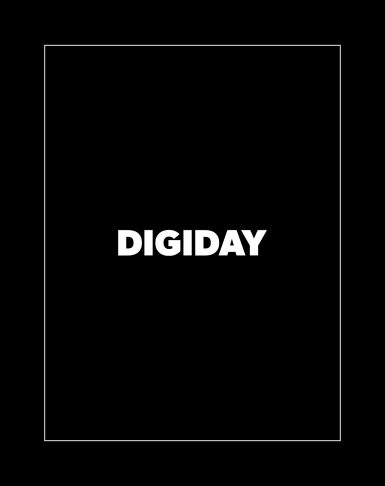Some of our latest thinking
Philip Davies, President, EMEA took the stage at The Economist's 4th annual Business Innovation Summit, "Harnessing AI: from Fear to Fortune," to deliver a keynote address on artificial intelligence, branding and the importance of simplicity.
Siegel+Gale
April 2024

Media Mentions
AI, brands and the importance of simplicity with Philip Davies
Philip Davies, President, EMEA took the stage at The Economist's 4th annual Business Innovation Summit, "Harnessing AI: from Fear to Fortune," to deliver a keynote address on artificial intelligence, branding and the importance of simplicity.
Siegel+Gale
April 2024
As C-Suites look for growth through mergers and acquisitions, marketers at those companies face questions: What happens to the brands? Do they become one? How do you market the new brand? Digiday caught up with branding experts, including our President, Pacific Rim, Jason Cieslak, to understand the process.
Siegel+Gale
March 2024

Press Room
As M&A rebounds, ‘it all hinges upon the CMO having a seat at the table’
As C-Suites look for growth through mergers and acquisitions, marketers at those companies face questions: What happens to the brands? Do they become one? How do you market the new brand? Digiday caught up with branding experts, including our President, Pacific Rim, Jason Cieslak, to understand the process.
Siegel+Gale
March 2024

Media Mentions
How to pick a name for your AI startup
In the world of exploding innovation in the AI industry, a great name paired with a great product can elevate your technology. But what should you consider before naming your AI tech or company?
Aaron Hall
March 2024

Media Mentions
How to pick a name for your AI startup
In the world of exploding innovation in the AI industry, a great name paired with a great product can elevate your technology. But what should you consider before naming your AI tech or company?
Aaron Hall
March 2024
More ideas
Simple is smartWe speak to Harriett Hindmarsh, Chief Marketing Officer, AECOM and Nicholas Jenkins-Smith, Design Director, Siegel+Gale, about the role of AI in their everyday working lives. Both use AI in different ways, with the same objective: to enhance their day-to-day roles – and those around them – as working professionals.
Siegel+Gale
April 2024

SMPL Q+A
AI: transforming work in the fourth industrial revolution
We speak to Harriett Hindmarsh, Chief Marketing Officer, AECOM and Nicholas Jenkins-Smith, Design Director, Siegel+Gale, about the role of AI in their everyday working lives. Both use AI in different ways, with the same objective: to enhance their day-to-day roles – and those around them – as working professionals.
Siegel+Gale
April 2024

S+G Blog
The formula for irrational love
Group Director, Experience, Jenna Isken, shares her own journey as a Bobbie mom and what brands can learn from the U.S.' first and only mom-founded and women-led infant formula company.
Jenna Isken
April 2024

S+G Blog
The formula for irrational love
Group Director, Experience, Jenna Isken, shares her own journey as a Bobbie mom and what brands can learn from the U.S.' first and only mom-founded and women-led infant formula company.
Jenna Isken
April 2024
Philip Davies, President, EMEA took the stage at The Economist's 4th annual Business Innovation Summit, "Harnessing AI: from Fear to Fortune," to deliver a keynote address on artificial intelligence, branding and the importance of simplicity.
Siegel+Gale
April 2024

Media Mentions
AI, brands and the importance of simplicity with Philip Davies
Philip Davies, President, EMEA took the stage at The Economist's 4th annual Business Innovation Summit, "Harnessing AI: from Fear to Fortune," to deliver a keynote address on artificial intelligence, branding and the importance of simplicity.
Siegel+Gale
April 2024

World's Simplest Brands
Digital innovation in hospitality makes for simpler customer experiences
Senior Strategy Director, Patrick Kampff, draws on the tenth edition of World’s Simplest Brands to explore how the hospitality sector has weathered the fallout of the COVID-19 pandemic and used technology to win over some demographics.
Patrick Kampff
March 2024

World's Simplest Brands
Digital innovation in hospitality makes for simpler customer experiences
Senior Strategy Director, Patrick Kampff, draws on the tenth edition of World’s Simplest Brands to explore how the hospitality sector has weathered the fallout of the COVID-19 pandemic and used technology to win over some demographics.
Patrick Kampff
March 2024

Media Mentions
How to pick a name for your AI startup
In the world of exploding innovation in the AI industry, a great name paired with a great product can elevate your technology. But what should you consider before naming your AI tech or company?
Aaron Hall
March 2024

Media Mentions
How to pick a name for your AI startup
In the world of exploding innovation in the AI industry, a great name paired with a great product can elevate your technology. But what should you consider before naming your AI tech or company?
Aaron Hall
March 2024

World's Simplest Brands
How auto brands can transform the consumer experience
How can brands in the automotive industry transform the consumer experience? The solution lies in merging experiential and educational moments, turning facts into feelings.
Miranda Wolf
March 2024

World's Simplest Brands
How auto brands can transform the consumer experience
How can brands in the automotive industry transform the consumer experience? The solution lies in merging experiential and educational moments, turning facts into feelings.
Miranda Wolf
March 2024
We know that brand is a powerful lever for transformation, growth and culture, but it’s powerless until it ‘shows up.’ How your brand is experienced is what wins you hearts and minds and loyalty. Through experience, brand shifts from an idea to a way for you to meaningfully connect with the world.
Ben Osborne
March 2024

S+G Blog
Brand promises, delivered: moments of truth
We know that brand is a powerful lever for transformation, growth and culture, but it’s powerless until it ‘shows up.’ How your brand is experienced is what wins you hearts and minds and loyalty. Through experience, brand shifts from an idea to a way for you to meaningfully connect with the world.
Ben Osborne
March 2024
From where they shop to how they communicate, people put a premium on experiences that are easy to understand; transparent and honest; caring for and meeting their needs; innovative and fresh; and useful. In short, simple
Siegel+Gale
March 2024

Press Room
In the news | World’s Simplest Brands Tenth Edition
From where they shop to how they communicate, people put a premium on experiences that are easy to understand; transparent and honest; caring for and meeting their needs; innovative and fresh; and useful. In short, simple
Siegel+Gale
March 2024

S+G Blog
In memoriam Gloria Siegel
We’d like to take a moment to remember Gloria Siegel, who passed away Sunday morning, February 25. Gloria was Alan’s wife, business partner and soulmate for more than 60 years. Her incisive creativity in naming so many iconic brands was surpassed only by the kindness, grace and consideration she had for everyone. Gloria represented the very best of us at Siegel+Gale, and we will miss her dearly. Our heartfelt condolences go out to Alan, daughter Stacey, son-in-law Michael and grandchildren Ruby and Leo.
Howard Belk + David Srere
March 2024

S+G Blog
In memoriam Gloria Siegel
We’d like to take a moment to remember Gloria Siegel, who passed away Sunday morning, February 25. Gloria was Alan’s wife, business partner and soulmate for more than 60 years. Her incisive creativity in naming so many iconic brands was surpassed only by the kindness, grace and consideration she had for everyone. Gloria represented the very best of us at Siegel+Gale, and we will miss her dearly. Our heartfelt condolences go out to Alan, daughter Stacey, son-in-law Michael and grandchildren Ruby and Leo.
Howard Belk + David Srere
March 2024

World's Simplest Brands
Healthcare is complex, but patient interactions don’t have to be
No one in the United States needs reminding that healthcare is complex, says Lisa Kane, Group Director, Strategy. Knowing which parts of the patient journey are simple, and which are not, can help improve customer experience.
Lisa Kane
February 2024

World's Simplest Brands
Healthcare is complex, but patient interactions don’t have to be
No one in the United States needs reminding that healthcare is complex, says Lisa Kane, Group Director, Strategy. Knowing which parts of the patient journey are simple, and which are not, can help improve customer experience.
Lisa Kane
February 2024
